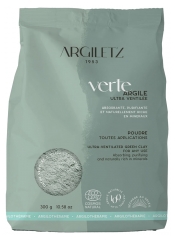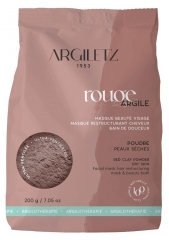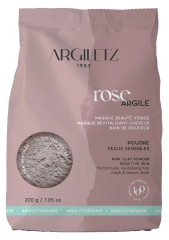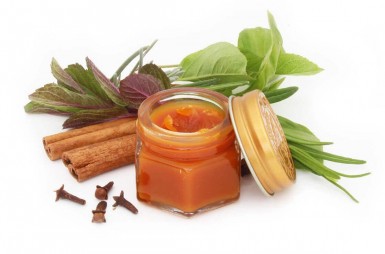Clay, a health-giving natural substance
Written by Paul Musset, Doctor in Pharmacy | published on | updated on 16/04/2024
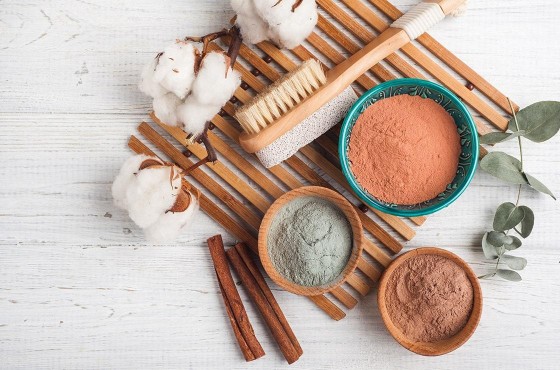
What are the best ways to harness the benefits of clay? The different forms of this natural earthy substance have a lot to offer to the skin, the hair or for internal use.
What is clay exactly?
Clay has been a constant in our lives for many thousands of years: as an ingredient for embalming mummies in Ancient Egypt, in the soil used to grow vegetables, as a balneotherapy treatment in the thermal spas of Ancient Rome, or as a construction material. Both natural and fired clay have a multitude of possible applications. However, there is no doubt that it is most widely used these days in the field of cosmetics. Where exactly does clay come from?
Is it a type of earth or a rock? Clay is a sedimentary rock which forms after silica-rich rocks break down. As it is one of the major components of sand, silica itself is a mineral used in glass production. Clay is a hydrated aluminium silicate that assumes a number of different forms depending on the other minerals which are added to it, the proportions in which they are added, the humidity, etc. It is familiar to us as the clay used to make pots and it is also added to cosmetic products. Some areas have soils rich in clay. This makes gardening more difficult because clay-rich soil is heavy and compact. However, it also retains water thanks to its characteristic impermeability. As a porous rock, clay can store large quantities of water below ground or can form impermeable barriers.
What are the health-giving properties of clay?
Clay has both absorbent and adsorbent properties. Absorption is the process by which molecules, ions or atoms deeply penetrate the mass of a liquid or a solid, while adsorption describes the way that gas or liquid molecules cling to the surface of a material, such as in the case of activated carbon. Because of this, clay can be used as an effective way of removing excess sebum from the skin or hair, as well as to eliminate intestinal gases and toxins.
Clay also aids healing by boosting tissue regeneration, is an antiseptic because it eliminates many different microorganisms, a haemostatic agent which helps to reduce bleeding and promote coagulation and an anti-inflammatory by virtue of its pain-killing properties. Therefore, when applied to small wounds or sores, it can accelerate the healing process and prevent secondary infection and can also work wonders on acne-prone skin by reducing the number and severity of lesions. It is also a beneficial way of treating eczema, allergies, or sensitive or reactive skin.
Rich in minerals and micronutrients, it helps to rebalance and revitalise the skin.
Let's take a closer look at kaolin
Without a doubt, white clay is the most renowned of all the different types of clay. It owes its name to the Gaoling clay pit in China, where an 18th-century Jesuit observed the clay being quarried and prepared before being made into superb fine white porcelain. He brought this knowledge and expertise back to the West. Nowadays, the delicate, light-reflecting properties of kaolin are also harnessed by the paper industry. Clay deposits are found all across the world, including France. The deposit at Saint-Yrieix in the Limousin region led to the development of the famous Limoges porcelain.
Which types of clay are used?
Green clay is used most commonly in skincare products. It is very absorbent and contains relatively large amounts of iron and aluminium. There are two main types of green clay, known as illite and montmorillonite. Illite clay is very absorbent and is mainly used externally. It is particularly suitable for oily skin. Montmorillonite contains up to 60% silica and is rich in magnesium. Green clay, which is ideal for facial use, is appropriate for all skin types and is also suitable for internal use.
White clay or kaolin, which is delicate and pure, contains just a small amount of iron, which accounts for its pale colour. It cleanses gently, soothing and hydrating the skin. In facial products, white clay works wonders on dry, sensitive skin prone to redness. It can also be used instead of talc when changing your baby’s nappy.
Blue clay is rich in silica and restores radiance to your complexion, eliminating impurities from the skin and helping to regenerate the epidermis. It has a particularly effective oxygenating action.
Red clay gets its colour from the higher amount of iron it contains compared to other clay types. It boosts the blood’s microcirculation and cleanses and purifies the skin.
Yellow clay is particularly suitable for oily skin, as well as haircare products and mature skin, thanks to its smoothing and toning properties.
Pink clay is a combination of red and white clay.
How should I use clay?
At Cocooncenter, you will find the full range of clays in various different products to meet your needs: ready-to-use masks, shower gels, shampoo and soap and products in paste form, as well as powders to be mixed with water, vegetable oil or your choice or essential oil. We also stock hand cream, toothpaste, as well as dietary supplements containing clay in combination with other natural extracts. You should do your research or seek advice from an expert in order to fully harness the potential synergies between the various types of clay and the natural substances they can be combined with based on your skin type.
Care should be taken when using clay internally: due to its adsorbent properties, it may interfere with certain medications, such as the contraceptive pill.
Mud-bath treatments, regulating shampoos, healing poultices or purifying acne masks - make the very most of this gift of nature.
Clay: three key takeaways:
- Clay is a natural substance which is well-tolerated by the skin. It is safe to use internally as long as the recommended dose is not exceeded.
- Whatever its colour, clay will help to eliminate toxins from the skin and the scalp by gently removing excess sebum.
- Research the beneficial formulations that can be prepared using clay, based on your skin type and the specific outcomes you want to achieve. These include formulations combining vegetable oils, essential oils and floral waters, etc.





